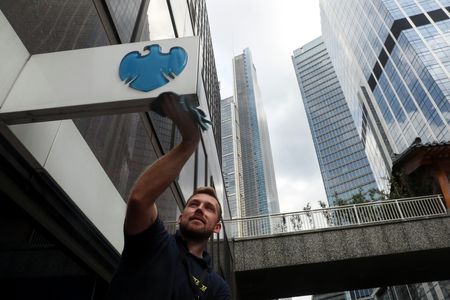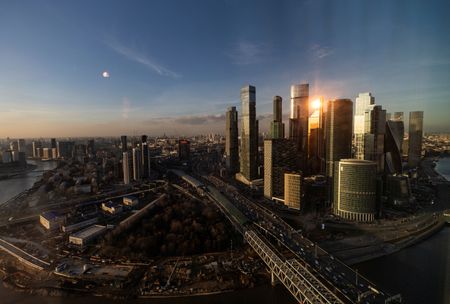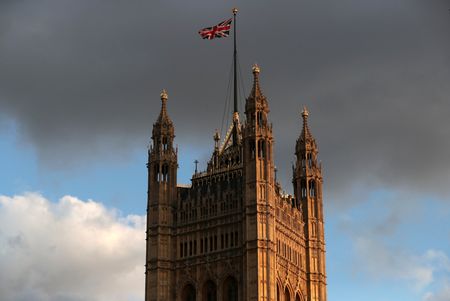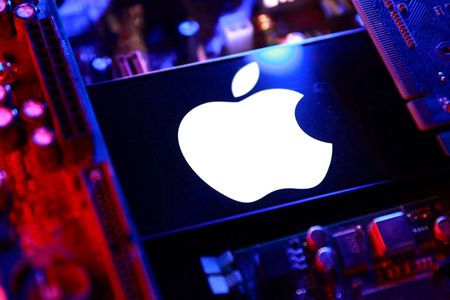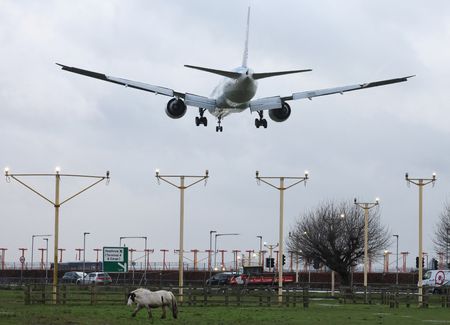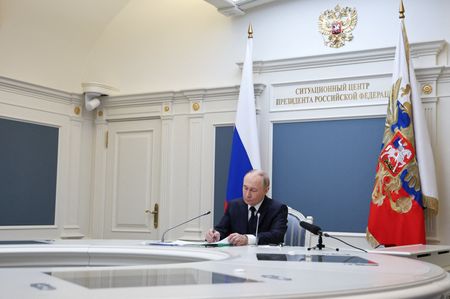By Lawrence White
LONDON (Reuters) -Barclays announced a surprise share buyback and upgraded a key profitability target for the year, as confidence in its income and cost-cutting progress outweighed fresh provisions and underperformance in its investment bank.
The British bank set aside another 235 million pounds to cover a motor finance mis-selling scandal and said it had taken a 110 million pound charge on the collapse of U.S. firm Tricolor, one of several bankruptcies that triggered wider concerns about banks’ exposure to private credit markets.
Shares in Barclays rose 4% in early Wednesday trading as investors welcomed the 500 million pound ($670 million) buyback.
BUYBACK CHEER, BUT INVESTMENT BANK UNDERWHELMS
Barclays said it would move to quarterly buyback announcements and now aimed to make a return on equity above 11% this year rather than reaching that figure, thanks to better than expected income and faster implementation of cost savings plans.
That allowed it to bring forward plans to distribute excess capital to shareholders, CEO C.S. Venkatakrishnan said in the update.
“We have been robustly and consistently generating capital for our shareholders consecutively over the last nine quarters,” he said.
Barclays reported a 7% drop in third-quarter pretax profit to 2.1 billion pounds, in line with analysts’ average forecast.
“Barclays’ latest results show a bank quietly outperforming despite headline noise,” said Matt Britzman, senior equity analyst, Hargreaves Lansdown. If the motor finance provision was stripped out, profits were 13% ahead of expectations, he noted.
Barclays’ investment bank, however, had a mixed three months.
Income at the unit grew 8% year-on-year, with its global markets business rising 15%. But fees from deals fell 2%, contrasting with Wall Street rivals that showed double-digit gains as corporate confidence rebounded, driving mergers and fundraising.
In a media call, Venkatakrishnan said the underperformance was not because Barclays was investing too little capital in the unit, but because the quarter “was dominated by a few large deals that we were not fortunate enough to be on”.
The bank slumped six places to 14th in the ranking for announced global mergers in the last quarter, according to LSEG data, and ranks seventh in the year to date behind six U.S. firms.
A bright spot in the bank’s otherwise underwhelming U.S. performance was its consumer bank business, where income grew 19% thanks to price increases and the acquisition of General Motors’ co-branded cards portfolio.
PRIVATE CREDIT EXPOSURE
Concerns are growing about weakening lending standards including in the private credit market, a less-regulated industry where companies have borrowed heavily in recent years, after a number of U.S. firms collapsed.
Venkatakrishnan said Barclays had no exposure to First Brands, an auto parts maker that filed for bankruptcy, and had turned down doing business with it because of concerns about its financial projections.
Barclays said exposure to private credit accounted for 20 billion pounds, or 6%, of its overall loans, with 70% of that exposure in the United States.
($1 = 0.7451 pounds)
(Reporting by Lawrence White. Editing by Tommy Reggiori Wilkes and Mark Potter)

